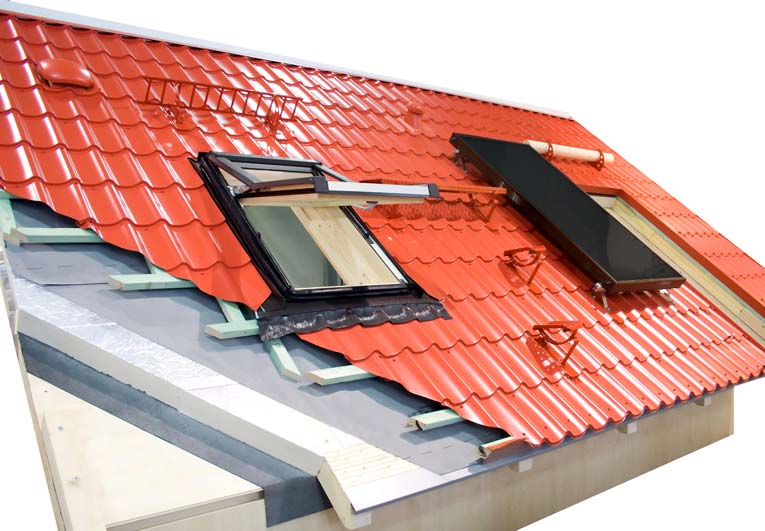Weather-resistant
Understanding Built-Up Roof Systems A Complete Guide
Understanding Built-Up Roof Systems: A Comprehensive Guide
What are Built-Up Roof Systems?
Built-up roof (BUR) systems, also known as tar and gravel roofs, are one of the oldest and most traditional types of roofing systems. They consist of multiple layers of bitumen (asphalt or coal tar) alternated with reinforcing fabrics, typically fiberglass or polyester. These layers are then topped with a protective surface layer of gravel, mineral granules, or a coating to provide durability and weather resistance.
The Components of Built-Up Roofs
A typical built-up roof system comprises several key components. The base layer consists of insulation boards or a vapor barrier installed directly onto the roof deck to provide thermal protection and prevent moisture infiltration. On top of the insulation, multiple layers of bitumen-saturated felts are laid down, with each layer being hot-mopped or cold-applied to adhere to the substrate and create a waterproof membrane. Finally, a surfacing material such as gravel or mineral granules is embedded into the top layer of bitumen to protect the roof from UV radiation and mechanical damage.
Advantages of Built-Up Roofing
Built-up roof systems offer several advantages that make them a popular choice for low-slope and flat roofs. One of the main benefits is their exceptional durability and longevity. When properly installed and maintained, built-up roofs can last 20 to 30 years or more, making them a cost-effective option in the long run. Additionally, the multiple layers of bitumen and reinforcing fabrics provide excellent waterproofing and resistance to damage from foot traffic, hail, and other environmental factors.
Considerations for Installation
Installing a built-up roof requires careful planning and attention to detail to ensure optimal performance and longevity. Proper substrate preparation is essential to create a smooth, even surface for the roofing materials to adhere to. The layers of bitumen and reinforcement must be applied evenly and securely, with each layer allowed to cure properly before the next one is installed. Additionally, selecting the right surfacing material is crucial to protect the roof from UV degradation and extend its lifespan.
Maintenance and Repair
Like any roofing system, built-up roofs require regular maintenance to ensure they remain watertight and structurally sound. Routine inspections should be conducted to check for signs of damage, such as cracks, blisters, or loose seams, which can compromise the integrity of the roof. Any issues should be addressed promptly to prevent water infiltration and further damage to the underlying structure. In addition to regular inspections, built-up roofs may benefit from periodic cleaning and reapplication of surfacing materials to maintain their protective properties.
Environmental Considerations
Built-up roof systems have come under scrutiny in recent years due to environmental concerns associated with the use of asphalt and coal tar products. These materials are derived from fossil fuels and can release volatile organic compounds (VOCs) into the air during installation and over time as they degrade. Additionally, the gravel or mineral surfacing used on built-up roofs can contribute to urban heat island effects by absorbing and radiating heat. As a result, alternative roofing materials
Enduring Roofs The Pinnacle of Durable Roofing Systems

The Foundation of Stability: Exploring Durable Roofing Systems
Roofing is more than just a shelter; it’s the crown that protects your home from the elements. Durable Roofing Systems have become the gold standard in ensuring longevity and resilience. Let’s delve into the world of these robust roofing solutions and why they stand tall among the rest.
Unyielding Strength: The Core of Durable Roofing
At the heart of Durable Roofing Systems lies a commitment to strength. These systems are engineered to withstand the harshest weather conditions, from scorching summers to freezing winters. The materials used are carefully chosen to provide a solid defense against rain, wind, snow, and UV rays. It’s not just a roof; it’s a shield that endures the test of time.
Beyond the Surface: The Anatomy of Durability
Durable Roofing Systems go beyond surface-level promises. The durability is ingrained in every layer, from the underlayment to the shingles. Each component is meticulously selected and installed to create a cohesive and enduring structure. This comprehensive approach ensures that your roof remains steadfast in the face of whatever Mother Nature throws its way.
Adapting to Change: Durable Roofing in a Dynamic Environment
The environment is ever-changing, and so are the challenges your roof faces. Durable Roofing Systems are designed with adaptability in mind. Whether it’s sudden temperature fluctuations or intense storms, these roofs flex without compromising their durability. They stand as a testament to the marriage of strength and flexibility in roofing technology.
Investment in Longevity: Why Durable Roofs Pay Off
Choosing Durable Roofing Systems is not just an investment in immediate protection; it’s a long-term strategy. The robust nature of these roofs translates to fewer repairs and replacements over the years. Homeowners embracing durable roofing solutions find themselves saving not only money but also the headaches that come with frequent maintenance.
Aesthetic Resilience: Beauty That Lasts
Durable Roofing Systems don’t just excel in durability; they maintain their aesthetic appeal over time. The materials used are resistant to fading, ensuring that your roof’s color and vibrancy endure the sun’s relentless rays. It’s a perfect blend of durability and lasting beauty, enhancing your home’s curb appeal for years to come.
Durable Roofing Systems: A Wise Investment in Home Safety
Beyond the financial and aesthetic aspects, Durable Roofing Systems contribute significantly to your home’s safety. A sturdy roof is the first line of defense against water damage, mold, and structural issues. By opting for durability, you’re safeguarding not just your investment but also the well-being of your home and everyone in it.
In the realm of roofing, durability isn’t just a feature; it’s a necessity. Durable Roofing Systems redefine what it means to protect your home, offering a steadfast shield against time and the elements. Discover the pinnacle of roofing strength and longevity at licensedinsurerslist.com, where durable roofing isn’t just a choice; it’s a commitment to a secure and resilient home.

